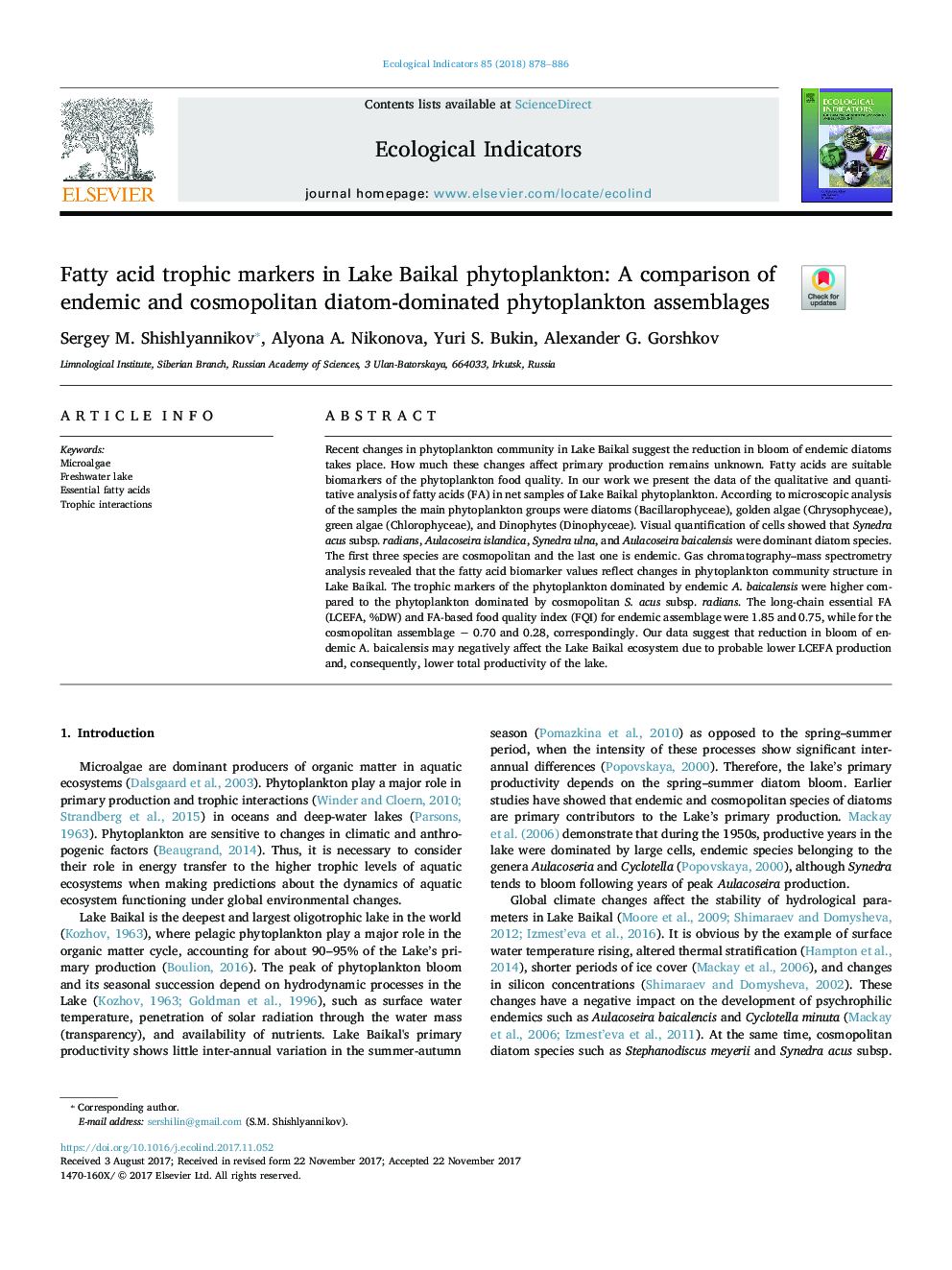| Article ID | Journal | Published Year | Pages | File Type |
|---|---|---|---|---|
| 8845765 | Ecological Indicators | 2018 | 9 Pages |
Abstract
Recent changes in phytoplankton community in Lake Baikal suggest the reduction in bloom of endemic diatoms takes place. How much these changes affect primary production remains unknown. Fatty acids are suitable biomarkers of the phytoplankton food quality. In our work we present the data of the qualitative and quantitative analysis of fatty acids (FA) in net samples of Lake Baikal phytoplankton. According to microscopic analysis of the samples the main phytoplankton groups were diatoms (Bacillarophyceae), golden algae (Chrysophyceae), green algae (Chlorophyceae), and Dinophytes (Dinophyceae). Visual quantification of cells showed that Synedra acus subsp. radians, Aulacoseira islandica, Synedra ulna, and Aulacoseira baicalensis were dominant diatom species. The first three species are cosmopolitan and the last one is endemic. Gas chromatography-mass spectrometry analysis revealed that the fatty acid biomarker values reflect changes in phytoplankton community structure in Lake Baikal. The trophic markers of the phytoplankton dominated by endemic A. baicalensis were higher compared to the phytoplankton dominated by cosmopolitan S. acus subsp. radians. The long-chain essential FA (LCEFA, %DW) and FA-based food quality index (FQI) for endemic assemblage were 1.85 and 0.75, while for the cosmopolitan assemblage â 0.70 and 0.28, correspondingly. Our data suggest that reduction in bloom of endemic A. baicalensis may negatively affect the Lake Baikal ecosystem due to probable lower LCEFA production and, consequently, lower total productivity of the lake.
Related Topics
Life Sciences
Agricultural and Biological Sciences
Ecology, Evolution, Behavior and Systematics
Authors
Sergey M. Shishlyannikov, Alyona A. Nikonova, Yuri S. Bukin, Alexander G. Gorshkov,
